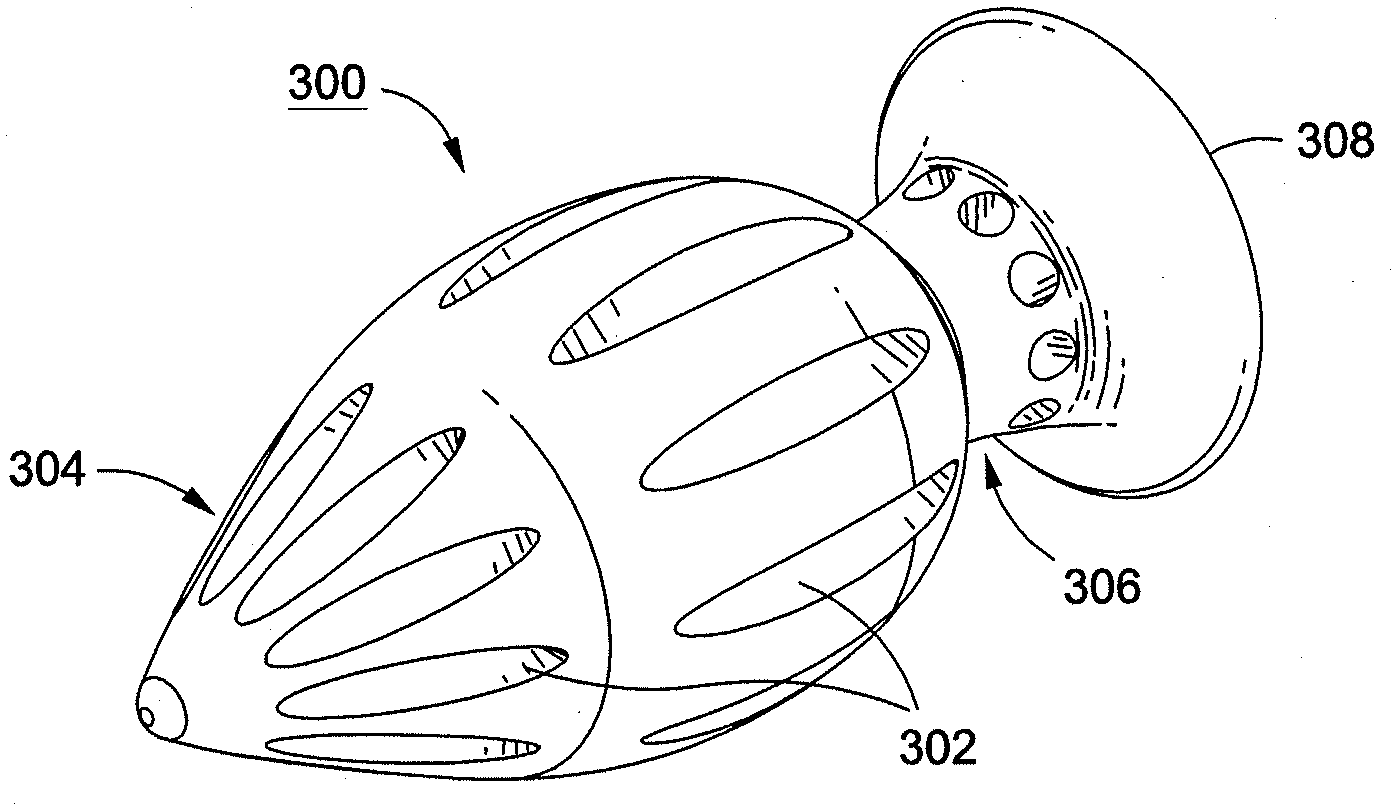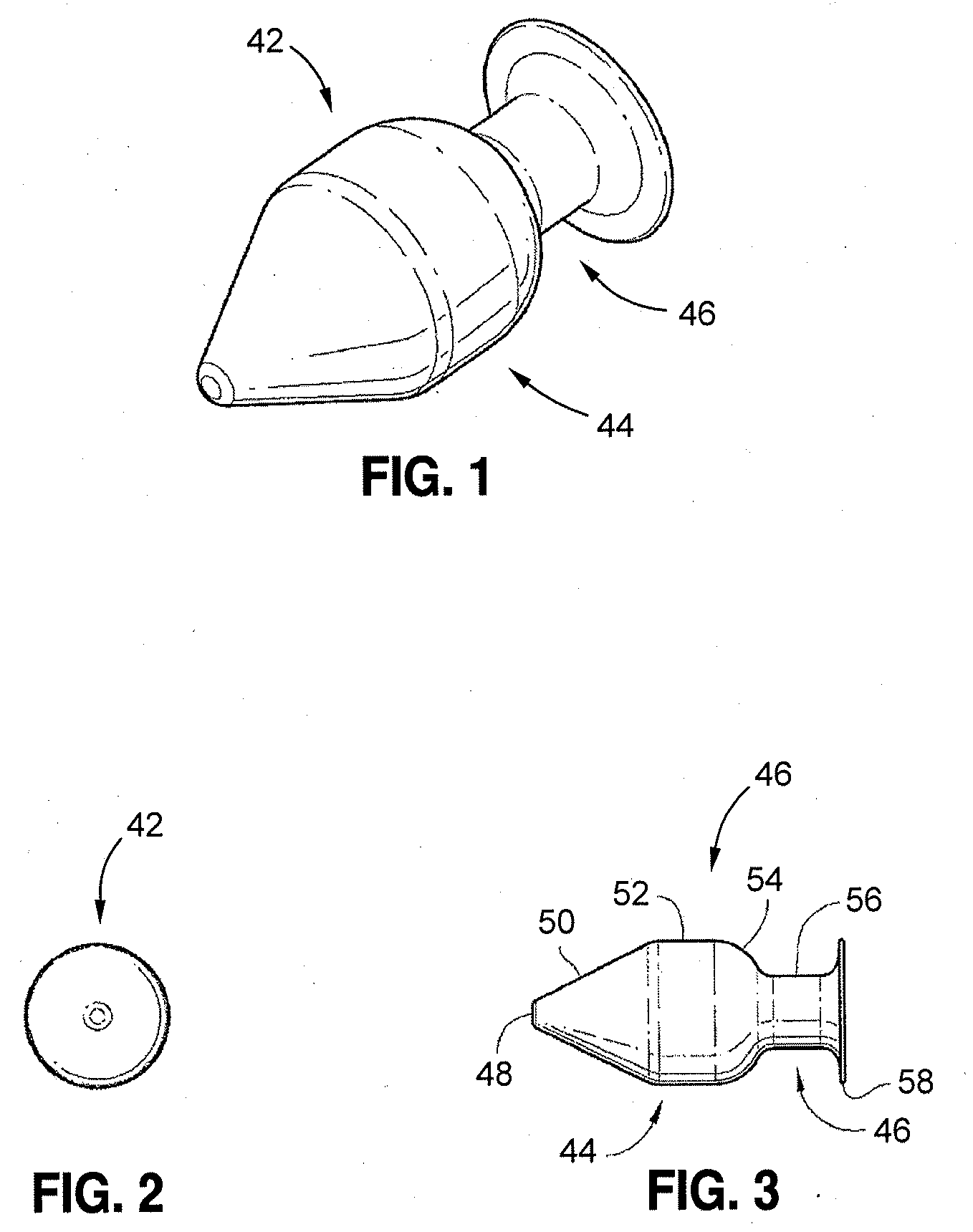[0015]A more desirable solution entails replacing, in part or as a whole, the damaged
nucleus with a suitable
prosthesis having the ability to complement the
normal height and motion of the disc while stimulating, at least in part, natural disc
physiology. Disclosed embodiments of the present spinal implants and methods of providing dynamic stability to the spine have several features, no single one of which is solely responsible for their desirable attributes. Without limiting the scope of these spinal implants and methods as expressed by the claims that follow, their more prominent features will now be discussed briefly. After considering this discussion, and particularly after reading the section entitled “Detailed Description,” one will understand how the features of the disclosed embodiments provide advantages, which include, inter alia, the capability to repair annular defects and stabilize adjacent motion segments of the spine without substantially diminishing the
range of motion of the spine, simplicity of structure and implantation, and a low likelihood that the implant will migrate from the
implantation site.
[0016]The implant can be fabricated from materials such as biocompatible metals such as
titanium, stainless steel, or
cobalt nickel alloys, or it can comprise
biocompatible polymers such as polyetheretherketone,
polyester, and
polysulfone. The implant can further comprise biodegradable / erodable materials such as
polylactic acid, polyglycolic acid, sugars, collagen, and the like. The axially elongate structure can comprise rigid materials or it can be compressible to assist with the maintenance of spine mobility.
[0017]In some embodiments, the implant can be suited for a
population of patients who have pain from an unruptured
hernia (bulge) that can be decompressed by implanting a
distraction device separating the vertebrae enough to pull the bulge in and relieving the disc of
axial compression, and perhaps allowing the disc to re-
hydrate. The decompression feature of the device can assist in preventing future herniation. In some embodiments, the implant can further serve as a stabilizer for the spine since it can be configured to apply support uniformly from left to right. Further, the implant can preserve some motion in the spine since the spine can still hinge forward or backward about the device to at least some extent. The axially elongate implant can serve as this
distraction device. The location of the implant can be at the center of flexion-extension and the implant can serve as a barrier against re-herniation along the entire length of the internal
posterior wall of the annulus. In some embodiments, a single implant can be placed to separate, or distract, the vertebrae. In some embodiments, a plurality of implants can be placed to separate the vertebrae. In certain embodiments, two implants can be placed, one on each side of the posterior portion of the spine, to stabilize the spine laterally and to provide one or more of the functions of decompression, vertebral
distraction,
facet unloading, nerve decompression, and
disc height preservation or restoration. In some embodiments, the implants can have their longitudinal axes oriented generally laterally with regard to the anatomic axis of the spine. In some embodiments, the implants can have their longitudinal axes oriented generally in the approximate anterior or posterior direction. In certain embodiments, the implants can have their longitudinal axes oriented radially with respect to the geometric center of the
intervertebral disc. In some embodiments, these devices can provide for
motion preservation of the spine segment within which the devices are implanted. In certain embodiments, the implants can partially or totally
restrict motion within that segment. In some embodiments, the implants can be used in conjunction with
spinal fusion procedures to maintain early postoperative stability of spinal support. In certain embodiments, the implant can reside totally within the outer boundary of the annulus of the intervertebral disc. In some embodiments, the implant can reside with a portion of its structure external to the outer boundary of the intervertebral disc annulus. In some embodiments, the decompression devices are placed using a posterior access. In some embodiments, the decompression devices are placed using posteriolateral access. In some embodiments, the decompression devices are placed using anterior or anteriolateral access.
 Login to View More
Login to View More  Login to View More
Login to View More 


